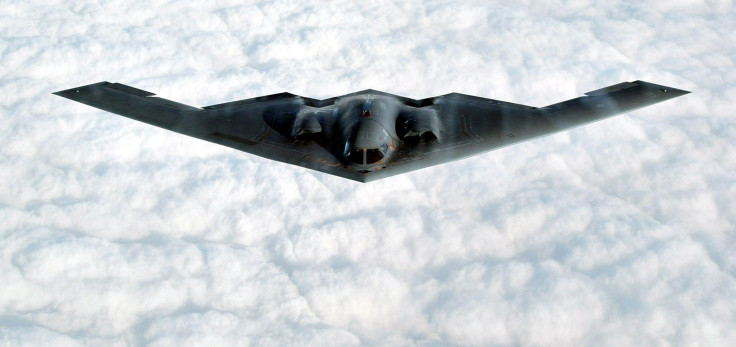US B-2 Bombers Get A Missile Upgrade; Can Now Take On Chinese Warships: Report
KEY POINTS
- The AGM-158B would extend the reach of the stealth bomber
- The B-2 Bomber recently received a series of upgrades
- They now have extra sensors, which helps elude air defenses
The U.S. troops will now have an edge over Chinese warships, thanks to the new extended-range stealthy missiles mounted on B-2 bombers, said a report. The test launch of the upgraded AGM-158B JASSM-ER missiles from a B-2 bomber was successfully conducted recently.
According to U.S. defense firm Northrop Grumman, the air-to-surface cruise missiles would extend the reach of the stealth bomber to strike targets from farther away, reported the South China Morning Post.
Though the AGM-158B had earlier been carried by other warplanes like
B-52 and F-16, it had never been mounted on a B-2 bomber. The advanced stealth bomber recently received a series of upgrades, including more secure high-frequency radio communications, a new computer processor that is 1,000 times faster, and a radar-assisted targeting system.
"The unrivaled capabilities of the B-2 make it the only long-range, penetrating stealth bomber currently in the U.S. arsenal," Shaugnessy Reynolds, the firm's vice-president and manager of the B-2 program, was quoted by the report.
Defense analysts have also claimed that the B-2 will benefit from the addition of sensors known as the Defensive Management System, which enable them to locate and elude enemy air defenses. This is critical as a new generation of Russian air defenses claim to possess the ability to track stealth aircraft.
This comes amid increasing tensions in the Indo-Pacific and worsening relations with China. Recently, the U.S. had sent two B-2 Stealth Bombers from Whiteman Air Force Base in Missouri to Australia to take part in "strategic deterrence missions," which analysts considered a show of force against Chinese influence in the Indo-Pacific. In 2020, the U.S. Air Force also deployed three B-2 stealth bombers to the tiny island of Diego Garcia in the Indian Ocean, for the first time since 2016.
China too is aware of the potential of AGM-158B, which the People's Liberation Army (PLA) described as a threat to PLA warships. Fu Qianshao, a retired PLA Air Force equipment specialist, told South China Morning Post that the AGM-158B missile had a range of nearly 1,000km (621 miles) and the PLA would need to push forward to the western Pacific Ocean to warn the planes off.
According to Fu, the AGM-158B missiles were subsonic – traveling slower than sound – and were therefore easier for China to intercept. But the U.S. would only deploy the B-2 in the unlikely event of a direct confrontation with China, he added.

© Copyright IBTimes 2024. All rights reserved.





















